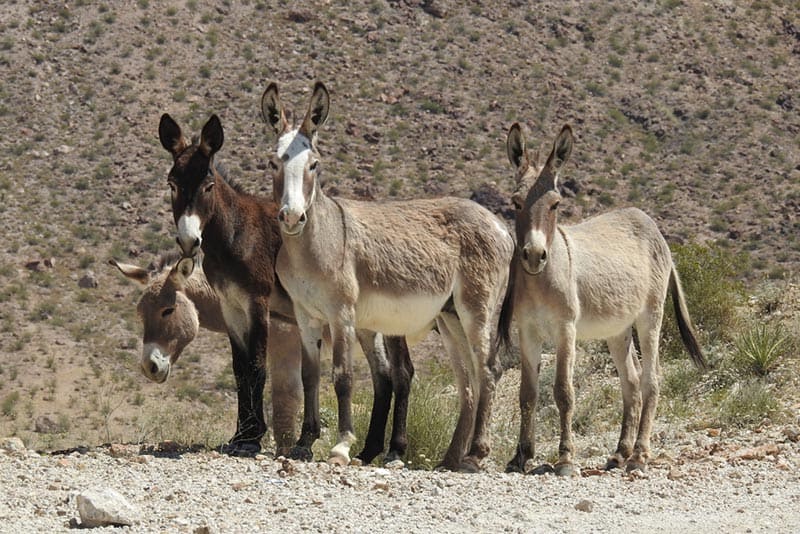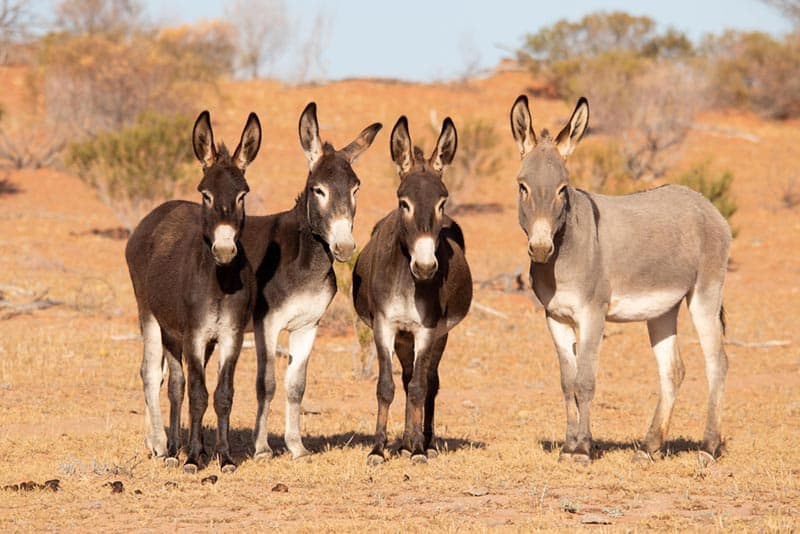Belonging to the same group of animals as horses and zebras, donkeys have been domesticated for thousands of years. Domestic donkeys, of which there are believed to be eight different species, are found throughout the world. However, there are also some wild donkeys, also called burros and asses, that are found roaming around in Africa and in the Middle East, as well as the Arabian Peninsula.
Some feral and semi-feral populations of donkeys also live in areas like Death Valley and the New Forest in England. There are even believed to be thousands of feral donkeys living in Australia.
Wild donkeys are generally a little bigger than their domesticated counterparts but are otherwise very similar. If you’re curious to learn more about wild donkeys, keep reading.

Wild Donkeys

There are believed to be more than 40 million donkeys in the world, including domestic and wild donkeys. Most wild donkeys live in or next to desert regions.
Due to the scarcity of food in these areas, donkey herds tend to live with a lot of distance between herd members. That is also one reason why donkeys have such loud voices—their braying can be heard up to 3 kilometers away, enabling them to communicate with other herd members that are not in the immediate vicinity. Their large ears also assist in this because they enable the animal to hear more clearly.
The scarcity of available food has also seen wild donkeys’ digestive systems become hardened so that they can digest barely edible vegetation. Donkeys get a lot of their moisture from the food they eat.
Are Wild Donkeys Threatened?
The African wild ass lives in countries in Africa. It was listed as endangered in 1970, and this listing was upgraded to critically endangered in 2004. Its numbers have dwindled because of habitat loss, hunting, and because interbreeding with other species of the donkey has led to a fall in true African wild asses. There are believed to be fewer than 600 true African wild asses left.
The Indian wild ass, which is also known as the Asiatic wild ass or onager, can be found in Mongolia, Russia, China, and parts of Asia and the Middle East. It is considered Near Threatened, with one of five subspecies of the animal already classified as extinct and a further two as endangered. Habitat loss and hunting are considered the two biggest threats to this species of wild donkey.

Conclusion
Although there are tens of millions of domestic donkeys in the world, wild donkeys are considered a threatened species. Those that do remain live in desert regions where food is scarce and their habitat is threatened. Their numbers are further threatened by hunting, while interspecies breeding has seen species declining, too. Feral and semi-feral donkeys are found in a lot of countries with large populations in Australia, the US, and the UK.
Wild donkeys tend to be a little larger than their domestic counterparts but share a lot of the same physical characteristics. They can be loud, have an effective digestive system, and packs tend to live some distance apart to make up for a lack of food sources.
Featured Image Credit: Gina Rieck, Shutterstock
